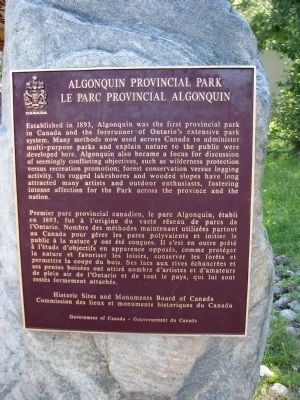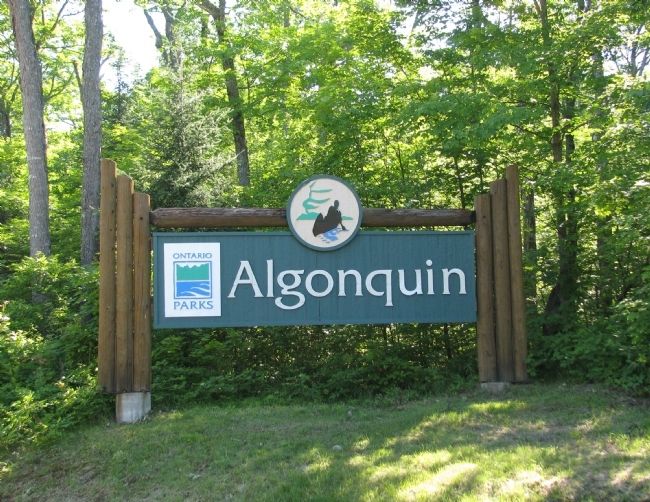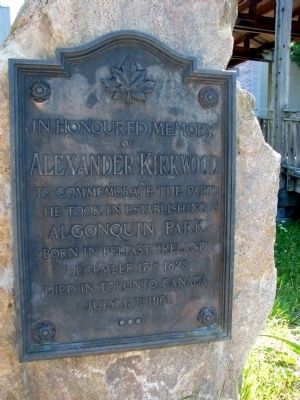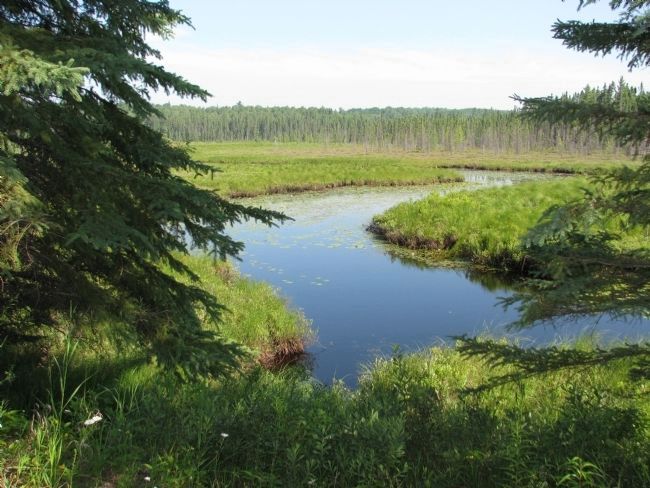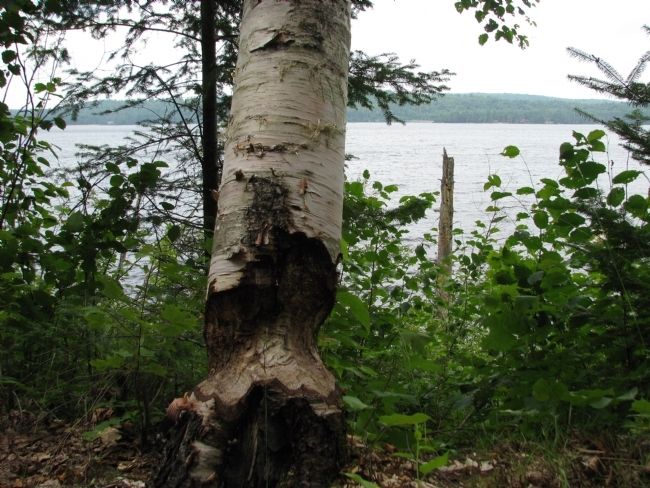Near Whitney in Nipissing District, Ontario — Central Canada (North America)
Algonquin Provincial Park
Le Parc Provincial Algonquin
Established in 1893, Algonquin was the first provincial park in Canada and the forerunner of Ontario’s extensive park system. Many methods now used across Canada to administer multi-purpose parks and explain nature to the public were developed here. Algonquin also became a focus for discussion of seemingly conflicting objectives, such as wilderness protection versus recreation promotion; forest conservation versus logging activity. Its rugged lakeshores and wooded slopes have long attracted many artists and outdoor enthusiasts, fostering intense affection for the Park across the province and the nation.
Le Parc Provincial Algonquin
Premier parc provincial canadien, le parc Algonquin, etabli en 1893, fut a l’origine du vaste reseau de parcs de l’Ontario. Nombre des methodes maintenant utilisees partout au Canada pour gerer les parcs polyvalents et initier le public a la nature y ont ete concues. Il s’est en outré prete a l’etude d’objectifs en apparence opposes, comme proteger la nature et favoriser les loisirs, conserver les forets et permettre la coupe du bois. Ses lacs aux rives echancrees et ses pentes boisees ont attire nombre d’artistes et d’amateurs de plein air de l’Ontario et de tout le pays, qui lui sont restes fermement attaches.
Erected by Historic Sites and Monuments Board of Canada.
Topics and series. This historical marker is listed in these topic lists: Exploration • Horticulture & Forestry • Settlements & Settlers. In addition, it is included in the Canada, Historic Sites and Monuments Board series list. A significant historical year for this entry is 1893.
Location. 45° 35.035′ N, 78° 21.567′ W. Marker is near Whitney, Ontario, in Nipissing District. Marker can be reached from Provincial Highway 60. This marker is located at the front entrance to the new Algonquin Park Visitor Centre. Touch for map. Marker is in this post office area: Whitney ON K0J 2M0, Canada. Touch for directions.
Regarding Algonquin Provincial Park. Algonquin Park was named a National Historic Site of Canada in 1992 in recognition of several heritage values including: its role in the development of park management; pioneering visitor interpretation programs later adopted by national and provincial parks across the country; its role in inspiring artists, which in turn gave Canadians a greater sense of their country; and historic structures such as lodges, hotels, cottages, camps, entrance gates, a railway station, and administration and museum buildings.
Also see . . .
1. Algonquin Provincial Park. (Submitted on October 3, 2012, by Cosmos Mariner of Cape Canaveral, Florida.)
2. Algonquin Visitor Centre. (Submitted on October 3, 2012, by Cosmos Mariner of Cape Canaveral, Florida.)
3. Alexander Kirkwood, farmer, author, and civil servant. In 1892, Kirkwood was appointed chairman of a royal commission to select the townships required for the park and to recommend suitable policies for its management. He himself collected the extensive background material required for the commission. After receiving its report, the Mowat government created Algonquin Park by special legislation in May 1893. Kirkwood is remembered largely for the prominent role he played in the establishment of Ontario’s first and most famous provincial park. (Submitted on October 3, 2012, by Cosmos Mariner of Cape Canaveral, Florida.)

Photographed By Cosmos Mariner, July 4, 2010
4. Algonquin Park Post Office
The Algonquin Park Post Office was started on January 9, 1897 at Canoe Lake. That same year the Post Office moved Cache Lake where it remained until the office closed in 1980. Managed by residents, Park Superintendents, and proprietors of the Highland Inn, the Algonquin Park Post Office was one of nine known post offices in the Park.
This post office box was used at Cache Lake to collect mail when the office was closed. Since 1993 this box has been stored in the Algonquin Park Archives.
Today cards and letters deposited in the box will be collected daily.
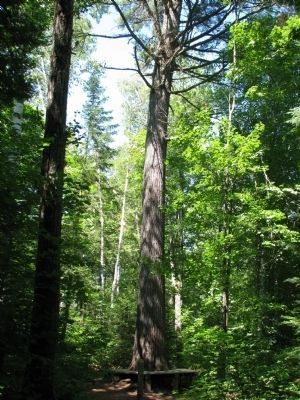
Photographed By Cosmos Mariner, July 4, 2010
5. Giant White Pine, Big Pines Trail
The biggest White Pine you will see on this trail. It is 122 feet tall, has a diameter at chest height of 45 inches and weighs an estimated 20 tons. All the big White Pines along this trail were determined to be 210 years old in the year 2000. This strongly suggests that they all owe their origin to just one special event – almost certainly a forest fire of just the right strength back in the year 1790.
Credits. This page was last revised on July 16, 2017. It was originally submitted on October 3, 2012, by Cosmos Mariner of Cape Canaveral, Florida. This page has been viewed 799 times since then and 21 times this year. Photos: 1, 2, 3, 4, 5, 6, 7, 8. submitted on October 3, 2012, by Cosmos Mariner of Cape Canaveral, Florida. • Bill Pfingsten was the editor who published this page.
